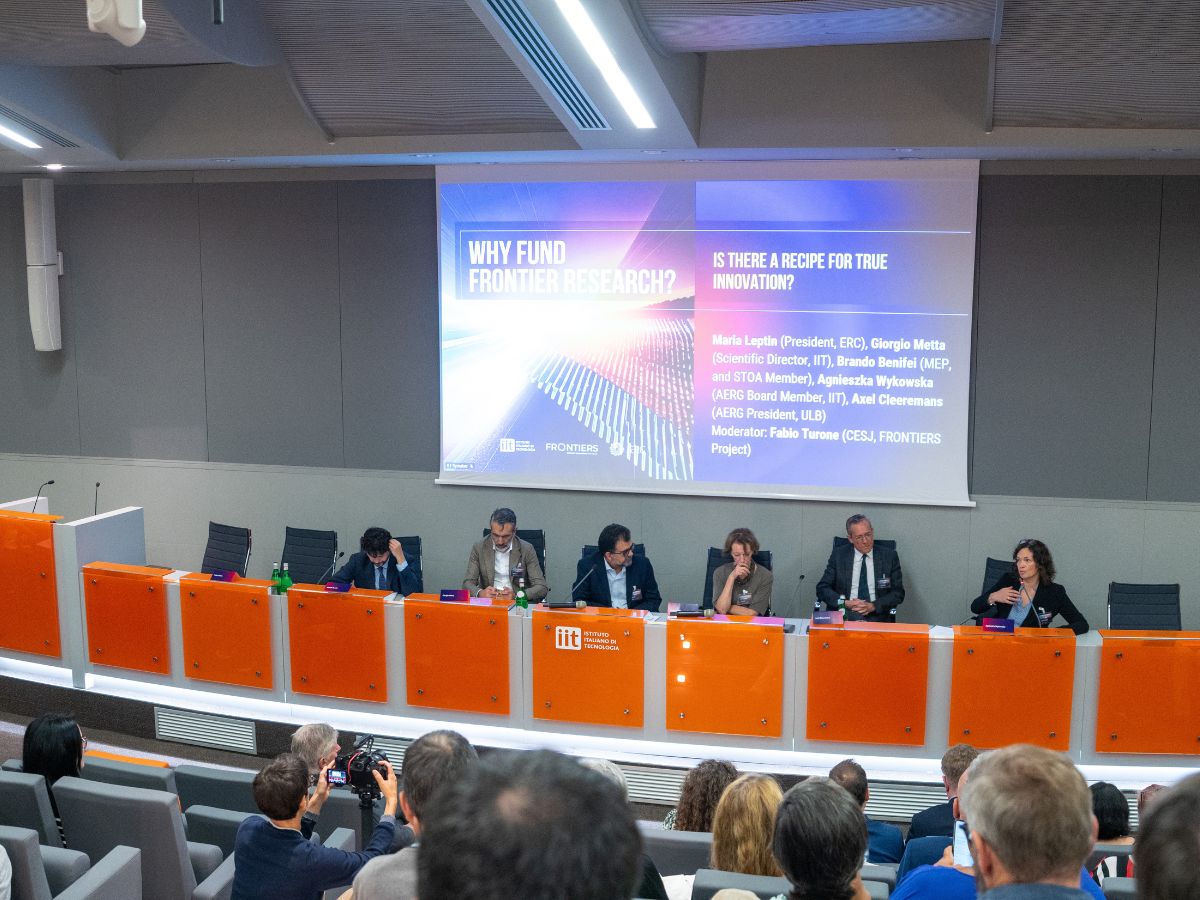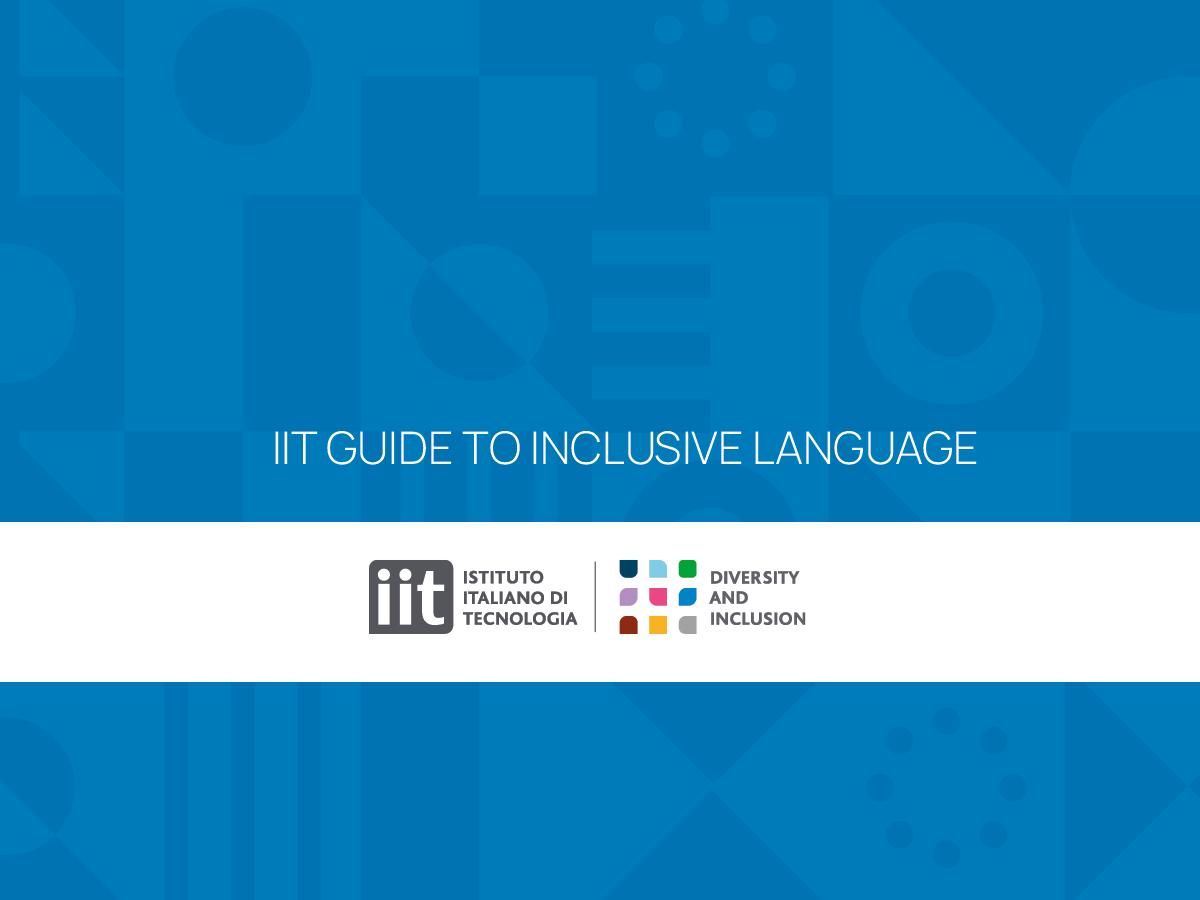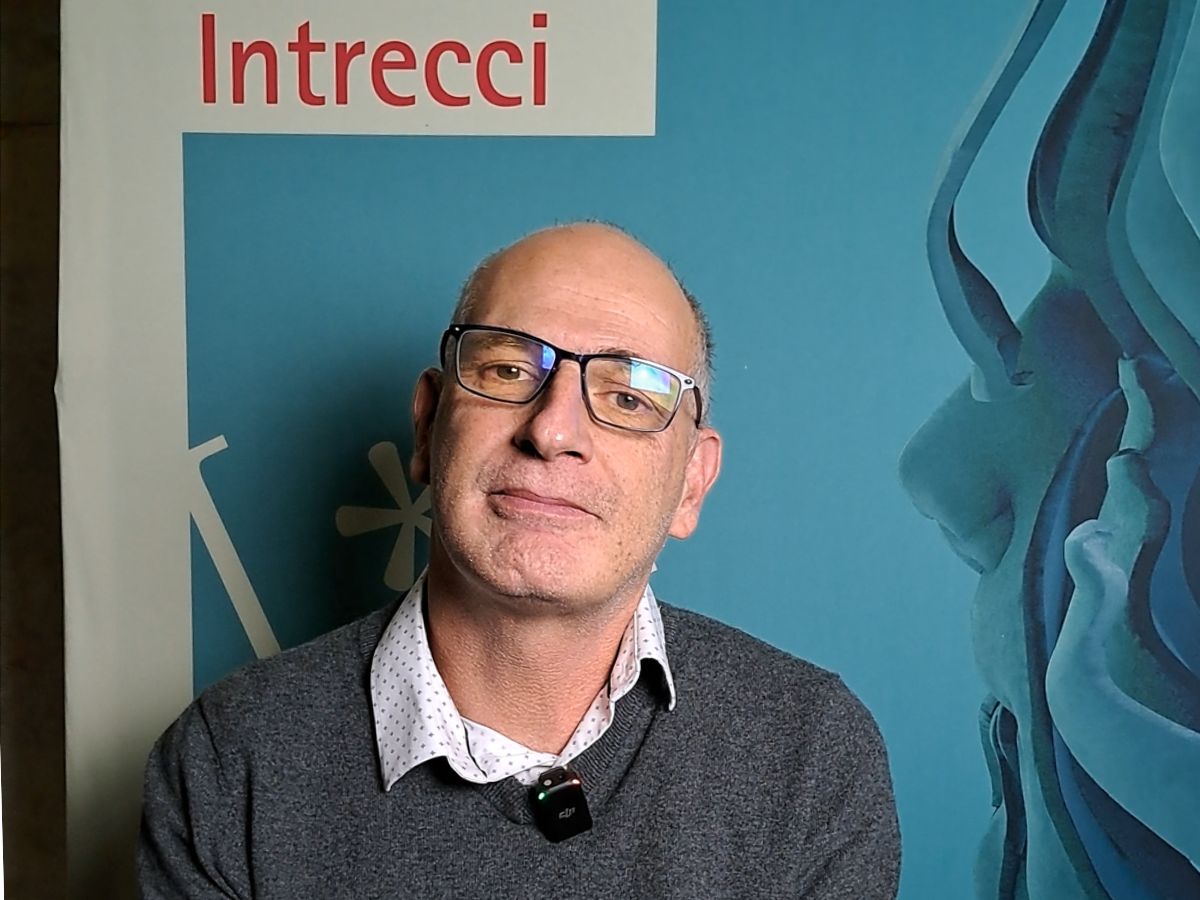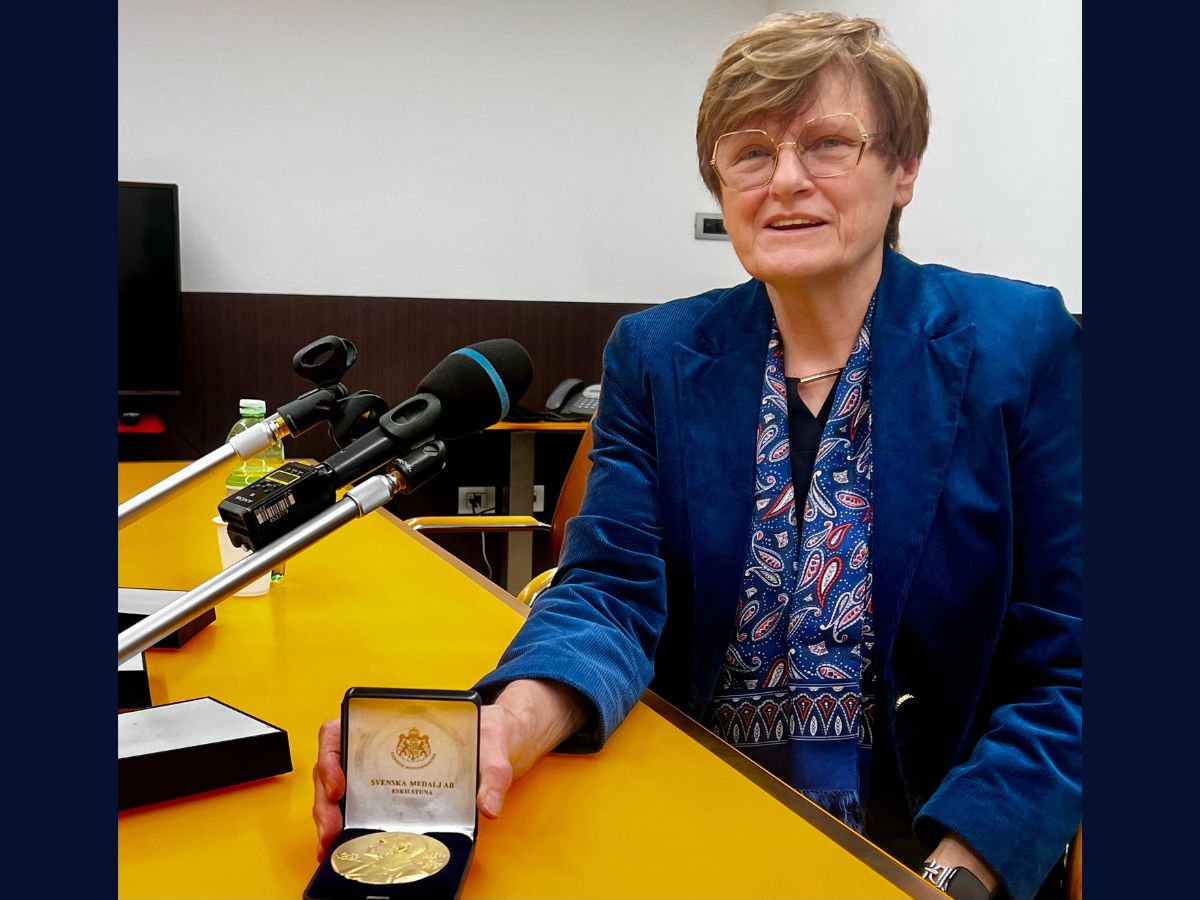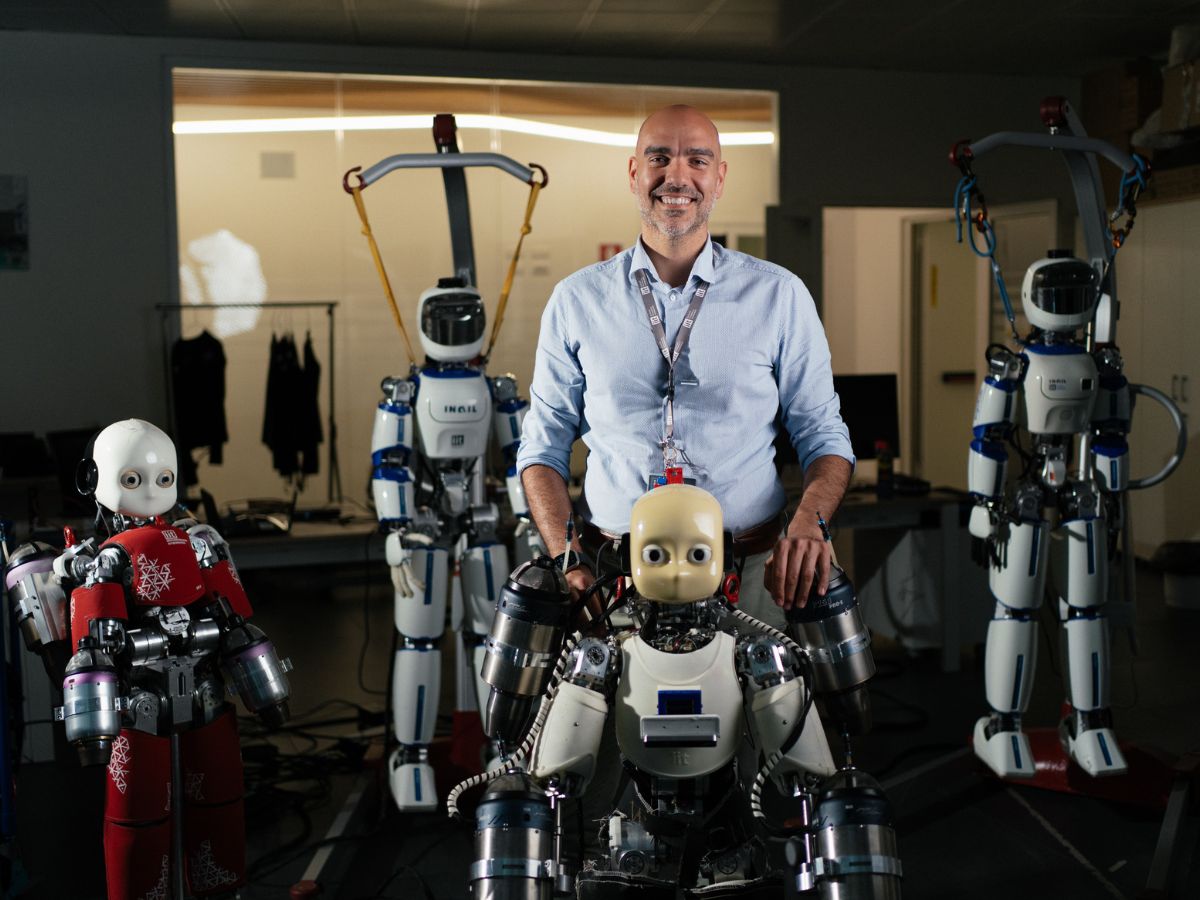“Why fund frontier research? The role of journalism in answering a crucial question for society”
“Journalists try to discover the truth, just as scientists do, and this is why it is important that they remain independent” with this statement, Maria Leptin, President of the European Research Council, summed up the closeness between the worlds of journalism and scientific research during the international event “Why fund frontier research? The role of journalism in answering a crucial question for society,” held on Friday, September 5 at the IIT Auditorium in Genoa.
The meeting featured a lineup of prestigious international speakers who, through their different perspectives, outlined the needs required to build and nurture a society capable of innovating across all sectors.
“Today is the future of yesterday,” noted Leptin, emphasizing how frontier scientific research is essential to find answers to health and environmental challenges that are already known or that will emerge in the future. Key examples included research on RNA technologies, which led to the development of COVID-19 vaccines, and research on neural networks, which gave rise to generative artificial intelligence. For science journalists, these innovations continue to be the subject of ongoing coverage, representing technologies in which nations and big tech companies are now heavily investing, for their significant impacts on the global economy. Michele Guerrini, Italian Counsellor for Research and Innovation at the European Union, offered some insights into future EU investments, confirming the interest in basic, curiosity-driven research as a way to ensure the global competitiveness of EU member states.
The specific case of AI was illustrated by Theodoros Evgeniou, Professor of Technology & Business at INSEAD in France, who presented some forecasts regarding its economic impact: a 7% increase in global GDP, equivalent to 7 trillion dollars, attributable solely to generative artificial intelligence (Goldman Sachs, 2024). He also highlighted AI’s role as an enabler within science itself, helping to accelerate cutting-edge discoveries. Europe is still lags far behind the United States and China.
For Giorgio Metta, IIT Scientific Director and one of the day’s speakers, it is precisely the complexity of today’s world that calls for closer interaction between research and journalism. More effective science communication can make discoveries accessible to all, increasing awareness of the changes underway. Sharing the same view, Michele Mazzola, Head of the Office for the Internationalization of Research at the Italian Ministry of University and Research (MUR), reminded the audience in his welcome remarks that “opening the doors of research is not the task of science alone, but also of journalists, who have the ability to transform laboratories into spaces accessible to society.” For Brando Benifei, Member of the European Parliament and member of STOA (the unit dealing with future perspective of science within the EU Parliament), it is crucial to “create a culture of accurate scientific information” to limit the circulation of “alternative facts” lacking scientific basis and potentially harmful.
The scientists present — representatives and Ambassadors of the Association of ERC Grantees (AERG) in Europe, including IIT researcher Agnieszka Wykowska and AERG President Axel Cleeremans— not only reaffirmed their commitment to communicating their discoveries to the public, but also stressed the need for greater long-term funding.
Edward Day, Press Officer at the Science Media Centre in London, explained how in the UK the Science Media Centre was established to promote exchanges between journalists and experts, providing a network of contacts with universities and research institutes, as well as thematic briefings available to journalists. Agnès Vernet, President of the European Federation for Science Journalism (EFSJ), emphasized that the journalist’s role is to “bring the citizens’ questions” to science, thereby maintaining a critical—not necessarily negative—point of view. On the contrary, interaction between journalists and researchers can generate new research questions and potential avenues for the development of technologies. Vernet also mentioned a program in France that allows journalists to spend a week in scientific laboratories and researchers to spend a week in newsrooms, with the goal of fostering a deeper mutual understanding.
During the morning, key European initiatives aimed at further strengthening the ties between journalism and frontier research were presented. Among them: the Frontiers project, funded by the European Research Council, which enables journalists to spend 3 to 6 months within research centers and carry out their own study projects on frontier topics. Journalist Daniela Ovadia, a partner of the project, presented the preliminary results from its first year. The EMBO Science Journalism Fellowships, which allow journalists to work in scientific laboratories for up to a year, and give scientists the opportunity to train as science journalists as a potential career path. This program, presented by EMBO’s Head of Special Projects Terry O’Connor, is funded through a private donation from ERC President Maria Leptin.
On the key question regarding the role of journalists toward scientific research —should they inform, promote, or hold to account? — ERC Press Officer Marcin Monko recalled the spirit that has animated journalism, not only science journalism, since its origins: bearing witness to the present in all its dimensions.
The event was organized by IIT in collaboration with the European FRONTIERS project and the Association of ERC Grantees (AERG).

